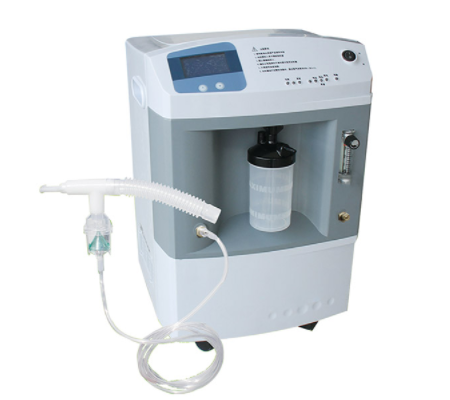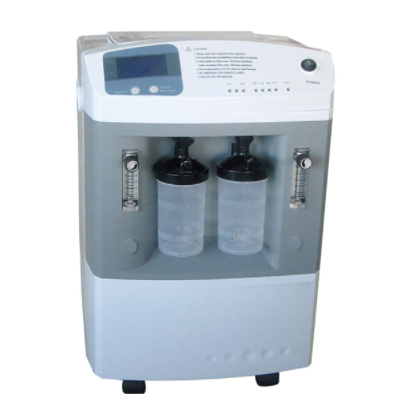Veterinary Oxygen Concentrator: What is Oxygen Therapy for Pets?
May. 26, 2022
A veterinary oxygen concentrator can be an attractive addition to a veterinary clinic, providing a safe and economical alternative.
How do veterinarians know a pet patient needs oxygen therapy?
Nearly any emergency patient showing signs of difficulty breathing will be immediately treated with oxygen therapy, while initial testing is performed to determine the cause of the breathing impairment. Any Emergency Room uses a device called a pulse oximeter to measure the amount of oxygen in the bloodstream. The probe clips onto the ear, lip, or tail. Pets with low oxygen levels will continue to receive oxygen therapy for the duration of their procedure.
What pets need oxygen therapy?
Your pet's lungs collect oxygen from inspired air and transfer it to the red blood cells. The heart distributes blood throughout the body and thus moves oxygen to every organ. Any disease that impairs lung, blood, or heart function, if severe enough, may impair oxygen delivery. Examples of diseases where oxygen delivery is compromised include: pneumonia, bruised lungs, anemia, and congestive heart failure, and COPD.
Is it effective?
Oxygen therapy can be very beneficial to animals who are in need of additional oxygen during surgeries or in an emergency situation. The downfall to oxygen therapy in animals is that it can become difficult to decide between the importance of supplying the animal with oxygen and stressing the patient when trying to do so. The cause of an animal needing oxygen, such as heart failure and lung cancer, can be the cause of unsuccessful oxygen therapy. A severe illness that requires oxygen may not be resolved with oxygen, as it is more of short-term treatment. Oxygen therapy in pets is used as an additional tool in treating an illness, but it will not solely heal an animal. Your vet will give you more detailed answers based on your pet’s health.
How oxygen concentrators work
“Oxygen concentrator” refers to a device that concentrates oxygen from a gas supply (ambient air) by selectively removing nitrogen to provide an oxygen-enriched gas stream. Currently, there are two methods commonly used: pressure swing adsorption (PSA) and vacuum swing adsorption (VSA). Both technologies produce continuous medical-grade oxygen (i.e. United States Pharmacopeia [USP] XXII Oxygen 93 percent Monograph), although oxygen purity for these devices can be as high as 95 percent. A typical PSA system comprises:
an air compressor;
a built-in refrigerated air dryer system (as seen in larger systems) to cool and dry ambient air;
a two-bed oxygen adsorber vessel that separates oxygen in the air from nitrogen; and
air and oxygen storage/buffer vessels used to stabilize the internal process gas flow, output pounds per square inch (gauge) (PSIG), and overall purity prior to oxygen being delivered to the respective application.
VSA technology (typically seen with larger liter-per-minute-size systems) eliminates many of the design challenges associated with traditional PSA systems. Instead of an oil-injected rotary screw air compressor that is used in a PSA system, VSA technology employs an oil-free “reversible blower,” which is ideal and much safer for medical applications.
In addition, as the internal operating pressures are significantly less than PSA, little if any water condensation is formed, so there is no requirement for a refrigerated air dryer system. A single-bed adsorber vessel is used with an oxygen storage/buffer tank setup. Compared to pressure swing adsorption, VSA systems can offer significantly lower operating and preventative maintenance costs during the year and during the life cycle. Lastly, VSA systems typically offer a “smaller” overall size/footprint to accommodate space constraints.
Oxygen concentrators use a molecular sieve material (zeolite) to adsorb gases. They operate on the principle of rapid pressure swing adsorption of atmospheric nitrogen onto zeolite minerals; nitrogen is then vented back into the ambient environment. This process technology is completely regenerative, as the molecular sieve material can last for a significant period. That said, the presence of moisture (water condensate) and/or oil within the process air stream contaminates the molecular sieve and, as a result, this material will need to be replaced. This is why it is extremely important to perform all manufacturer-required preventive maintenance procedures to avoid this situation, along with any additional operating challenges. In summary, molecular sieve material should last at least 10 years in a “normal” operating system/environment.
How do veterinarians know a pet patient needs oxygen therapy?
Nearly any emergency patient showing signs of difficulty breathing will be immediately treated with oxygen therapy, while initial testing is performed to determine the cause of the breathing impairment. Any Emergency Room uses a device called a pulse oximeter to measure the amount of oxygen in the bloodstream. The probe clips onto the ear, lip or tail. Pets with low oxygen levels will continue to receive oxygen therapy for the duration of their procedure.
How is oxygen administered?
The Emergency Room and ICU both have specially designed enclosed cages or "tents" for administering oxygen. Instead of bars, the doors are solid Plexiglas and the cage features a valve to control the amount of oxygen delivered into the cage. Oxygen might also be administered via a mask held over the dog or cat’s nose. For pets needing to move about the hospital for tests and procedures, this is a portable oxygen delivery method. This method is commonly used if a pet in congestive heart failure needs an EKG or a cardiac ultrasound. Really big dogs don’t fit into most oxygen cages. In those dogs, veterinarians administer oxygen directly into the nasal passages using special tubes.
What other uses are there for oxygen?
Pets undergoing general anesthesia for surgery or teeth cleaning receive oxygen as part of the anesthesia protocol. Once the breathing tube is placed into their trachea or windpipe, a mixture of oxygen and anesthetic gas is pumped through the breathing tube to maintain the pet under anesthesia. When the procedure is finished, the anesthetic gas is discontinued and the pet breathes only oxygen until adequately awake from anesthesia.
How much does it cost?
The cost will be different for everyone and will be based on how your vet charges for oxygen. Normally oxygen is charged by every half hour and can incur additional fees depending on the vet. Average costs range between $80 and $125 for every half hour of oxygen use. This cost can be drastically reduced if you purchased your own Oxygen Concentrator, which typically lasts at least 10,000 hours of use.
Know about Wondcon Veterinary Oxygen Concentrator
It is an easy-to-use oxygen concentrator with a single flow adjustment knob device. Optional double flow. optional nebulizer function.
Features
Liter Flow: 0-10L/min
Oxygen Concentration: 93±3%
Outlet Pressure (Mpa): 0.04-0.07 Sound Level: ≤50db
Power: AC230V. 50Hz
Power Consumption: ≤550W
LCD display: Operating pressure. Present Working Time
Alarm: Power failure alarm. High&Low pressure alarm. Temperature alarm. Low purity alarm.
Net weight:28kg
Size: 365×375×600mm
The optional dual-flow configuration allows two users to inhale oxygen at the same time by sharing one machine.
Support for 24×365 operation
Suitable for oxygen supply for small animals.such as dog.cat.etc.
If you are interested in our products, please feel free to contact us!








